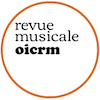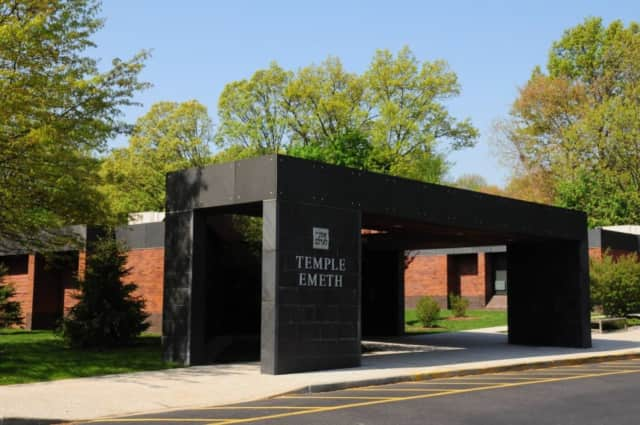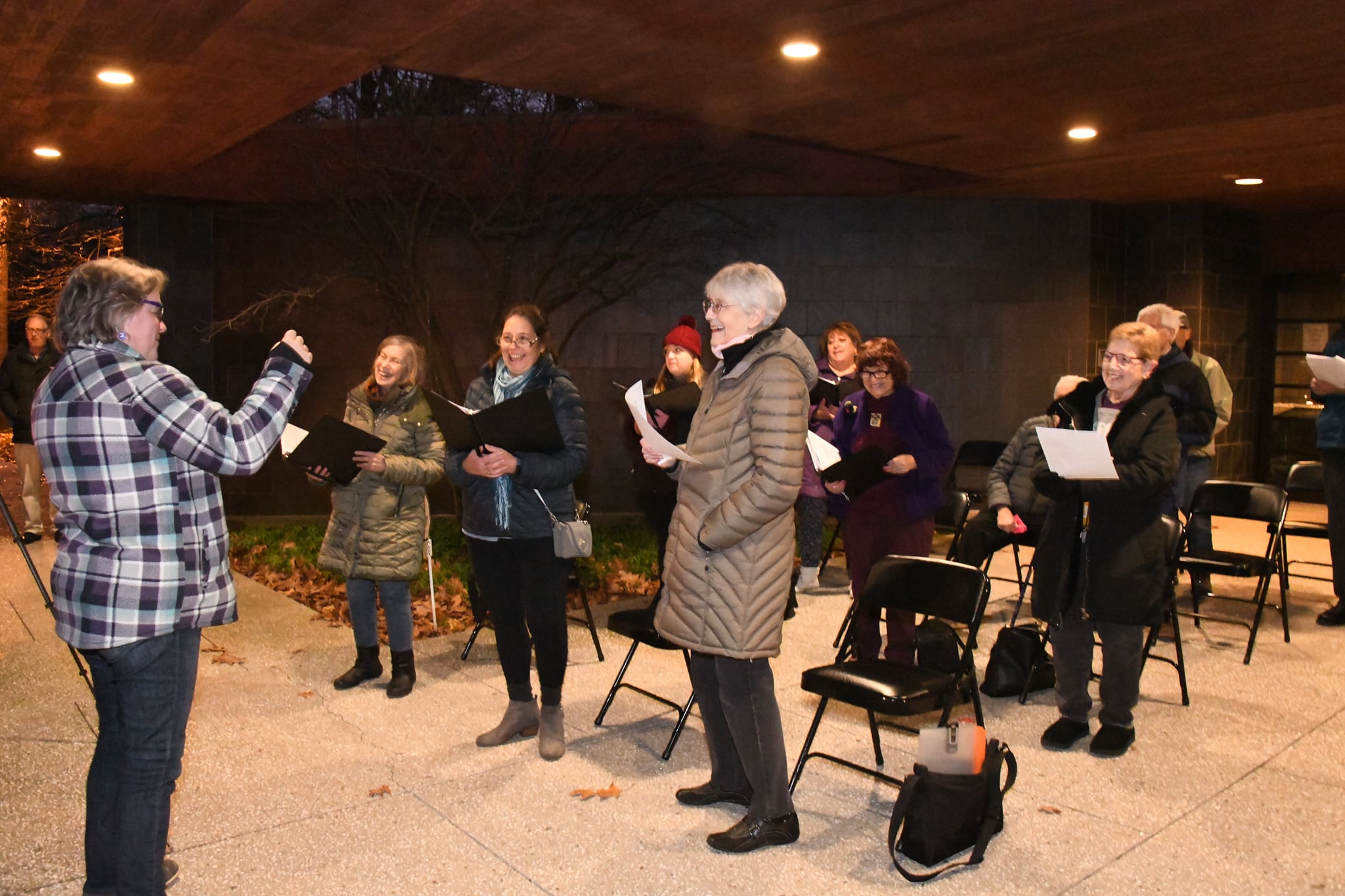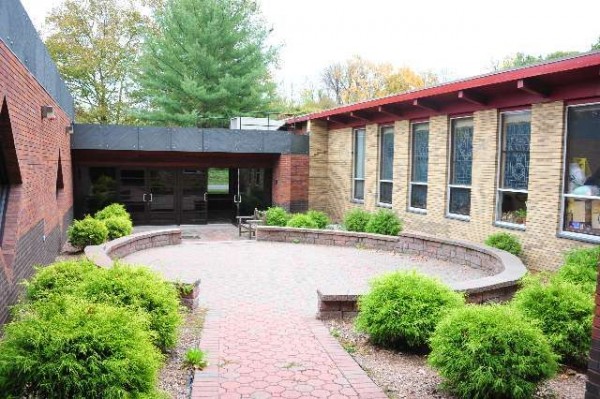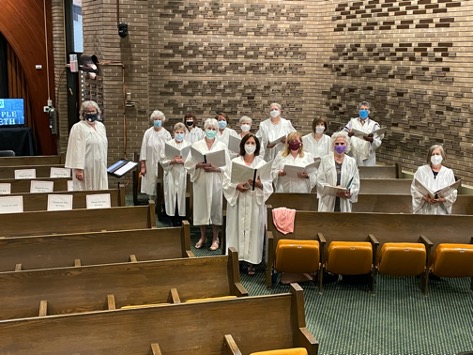Any Port(ico) in a Storm. Field Notes on an Adult Amateur Synagogue Choir during the Pandemic
Carol Shansky
| PDF | CITATION | AUTHOR | VERSION FR |
Abstract
This set of field notes relates the experiences of an adult amateur synagogue choir during the two years of the COVID-19 pandemic. The director’s observations comprise the notes and reflections on the meaning of music in the lives of the choir members, the challenges faced by the ensemble to continue rehearsing despite the shutdown, and the different ways that those challenges were met.
Keywords: adult learning; choir; community music; pandemic; synagogue music.
The global pandemic meant the cessation of activities, including those by community music groups. This set of field notes follows the activities of an adult amateur synagogue choir and the challenges and motivations behind their continued work during the COVID-19 pandemic. The period under observation extends from March 2020 and the shutdown of activities outside the home through to March 2022. The pandemic and its resulting restrictions and limitations had a significant impact on the choir, yet it illustrated the meaning that the act of singing and participating in a musical community holds in the lives of its members.
Kol Emet (“Voice of Emeth”) is an adult amateur choir at Temple Emeth, located in Teaneck, NJ (just outside of New York City). It has been a part of temple life for over forty years and, more importantly, a significant part of the lives of its members. I have been their director for five years. The singers are generally in their 60s and older, although one or two are in their 50s and we have one member who is in her 20s. A couple members sing in other choirs and have had some training, but for most, our weekly rehearsals are the only time that they sing. Some read music, some do not; most learn best by rote. Several choir members have been in the ensemble for more than twenty years, some have joined recently. Traditionally, the choir meets weekly throughout the liturgical year, starting with the High Holidays (Rōsh Hashānāh [“start of the year”] and Yom Kippūr [“Day of Atonement”]) in the fall and singing at three other Shabbat services during the year, including Kristallnacht (“Night of Broken Glass,” a service which acknowledges the horrific attack on Jews on November 9, 1938), Chanukah, Shabbat Shira (“Shabbat of Song”), and the Pride Shabbat (celebrating the LGBTQ+ community).
Figure 1: Kol Emet in the Temple Emeth parking lot, June 2020. Photo courtesy of Barbara Balkin.
Parking Lot Sings
We typically take a winter hiatus from late January to mid-March, which allows the “snowbirds” who reside in Florida not to miss rehearsals, as well as letting other members avoid too much driving on dark and sometimes icy roads. In 2020, we were just readying for our first rehearsal after the break when all institutions in New Jersey, including religious ones, were shut down due to the pandemic. What we thought would be a few-week extension to our break was instead a much longer absence. The choir members began to express sadness at not meeting for regular rehearsals. It seemed primarily to be due to the loss of the community experience of singing together and bonding. So, in late June 2020 I proposed that we meet in our parking lot just to get together and have a “sing,” just a chance to sing familiar songs—socially-distanced and fully masked. Almost every choir member came, as well as a few other temple members, and the sense of joy and even relief at being able to see each other and sing together was very palpable. Even the pianist, who is a paid employee, thanked me not for the gig, but for the opportunity to make music again. I found myself in tears as they sang “Oseh Shalom” (“Prayer for Peace”).
The parking lot meetups were not meant to be ongoing, and we only met twice. July in the metropolitan New York area can be quite hot and humid, so being outside for an extended time was avoided, especially with masks on.
August is typically when we begin rehearsing for the High Holidays, as the choir has an integral role in the evening services, a highlight of their singing year. We had to confront the sad news that we would not be part of the fall 2020 High Holiday services, which would be indoors for the clergy, but livestreamed for all congregants. There was no way to include the choir. Recording some of their music outside was impossible, both because of the challenges of that type of recording and its resulting product, and because of the environmental and traffic noises (the road outside the temple runs parallel to a busy freight train rail line). Members expressed their distress as one of loss in their personal lives. I must admit that while the decision not to include the choir was not my own, I felt profound guilt and a sense of responsibility for the welfare of the ensemble. In response, and realizing that the pandemic would certainly not be ending soon, I proposed that we start meeting again, this time under the building’s entrance, a portico, with the thought that while not actual walls, the space would provide some measure of improved acoustics and most especially a sense of closeness among the members, despite the continued social distancing.
Figure 2: The Entrance to Temple Emeth, 2019. Photo courtesy of Barbara Balkin.
Under the Portico
As can be seen in Figure 2, the entrance to Temple Emeth is covered and defined by stone pillars. We set up chairs in rows as would be the case in an indoor rehearsal room which created an atmosphere more conducive to practice than the parking lot. Singers were better focused and better able to hear me.
We rehearsed through fall 2020 under the portico, while masked, socially distanced, and in increasingly heavier jackets, until it was truly too cold to continue to meet outside. They really seemed to enjoy the experience, once again illustrating the critical role that musical communities play in the lives of their practitioners. Just as with the parking lot, most members came every week, even as the temperatures dropped as we moved into October.
As their director, I cannot say that this is a very effective rehearsal paradigm. This group is most used to learning by rote and imitation and they couldn’t hear the person next to them. Due to the distancing and masks, I really couldn’t hear their full sound well, compounded by the dissipation of their sound in the outside environment. I had to choose music that was a bit simpler than they were used to, making the priority the action of singing, rather than preparation for a performance. An additional issue is that they had to bring their own chairs, which were generally foldable lawn chairs, which promoted bad posture. It wasn’t reasonable for this age group to stand for an entire rehearsal, but the posture issues had an impact on their sound as well.
By November, it was too cold to be outside. This is an intrepid bunch, but I had to make the decision to move our winter hiatus earlier. I had to wonder how much longer they might have gone! The answer came, in fact, at Chanukah which was in early December. We met to go over some songs and then participated in the congregation Chanukah celebration in the parking lot. It was cold, but I only saw joy and excitement on the faces of the choir members at regaining some measure of their role in temple life and leading the congregation in song.
Figure 3: Kol Emet singing at the Chanukah service, December 2020. Photo courtesy of Barbara Balkin.
Spring 2021 meant restarting our portico rehearsals, as the building remained closed. We all recognized that it was not an ideal rehearsal set-up, but it was more important to the members to sing at all, so we continued.
What impressed me the most about this is the continued high level of attendance. We even attracted at least one new member! The idea of Zoom rehearsals was floated, but the interest was not there because singing alone on camera, since the mute button must be on, was not what the members of the choir wanted or needed. It is clear to me that what ranks as most important is the social interaction that choir participation provides. Without a service to sing for, it’s the action of singing together, the social aspect of music making that is central to this music education endeavour.
Figure 4: The courtyard at Temple Emeth, 2019. Photo courtesy of Barbara Balkin.
In the Courtyard
Once the vaccination program was underway, members of the choir were fully inoculated by late spring 2021. The experience of rehearsing outside with masks and weather issues was wearing thin, but the synagogue leadership was worried about our coming inside. The building was still officially closed and even though choir singing outside is a sub-par rehearsal scenario, to let one group use the building and not another was a barrier to returning to rehearse in the sanctuary. The specter of the now-infamous experience of the church choir rehearsal as a super spreader continued to loom large, even though that happened at the earliest stages of the pandemic1The Skagit Valley Chorale of Mount Vernon, Washington, held their regular rehearsal on March 10, 2020, as usual. No one was aware of the dangers of the coronavirus and the state shutdown was yet to occur (it would be declared two weeks later). One member was unaware that they were carrying the virus and it spread widely through the group. 53 of the 61 singers became ill and two passed away (Geggel 2020; Hamner et al. 2020)..
I requested that the choir be allowed to sing in an interior open-air courtyard in the building. Because members would have to walk through an enclosed corridor to get there, this required board-level approval. It took pushing on my part, but we were given permission. We were to remain masked and distanced in that space, although I will admit the distancing was getting narrower.
Rehearsals in the courtyard meant some improvement as the brick walls offered some acoustical support. However, we were still subject to weather, and 2021 was a rainy summer. But we continued to work.
By mid-July 2021, the heat and humidity made rehearsing outside, whether in the courtyard or under the portico, very challenging. Choir members continued to come, despite complaints about the humidity and the discomfort of wearing masks in those conditions. The official opening of the building was announced for August 28, but to wait another month-plus was more than I thought the ensemble could bear. I lobbied hard for an exception and choir members who are active in leadership areas (or just didn’t mind nagging board members) also spoke to whomever they could and by the end of July, we received permission to rehearsal inside, in the social hall, where we could best socially distance.
Because everyone was vaccinated and the pandemic seemed to be easing, we made masks optional. It felt like a return to normal and you could see how happy they were. We had some productive and fun rehearsals. However, in early August 2021, the new Delta variant was spreading the New York area and a few of choir members were uncomfortable that everyone was not wearing a mask. At that time, I received word from the Rabbi and Cantor that the choir would be able to participate in the services for the High Holidays, which were going to be offered in a hybrid format where congregants had the choice to be in the sanctuary—masked—or view via Livestream. The choir would be singing in the sanctuary.
Rehearsing for the High Holidays
While this was wonderful and welcome news, it generated a new problem: the choir area in the sanctuary is quite tight as choir members are right next to each other in a typical service. A quick poll of the members revealed that many were, at minimum, uncomfortable with sitting so closely. Many would not sing the service if this were the seating arrangement, so we needed to investigate other possibilities that would enable distancing, singing with masks, and viewability on the Livestream. Another challenge! We settled on singing in a set of pews, turning to the side to face the congregation—and the cameras.
As director, I had to consider the challenge of singing a long service with masks and choir robes. We tried it out and the resulting heat and discomfort from that combination was enough that I decided that we would sing fewer songs than in the past, so that the choir members would feel that they once again had their role in the major holiday services, without compromising their voices and health. This was another adjustment, but they rose to the occasion and did beautifully, despite new sightlines (which included my having to stand on a step stool to be seen). While this was not a return to “normal,” the fact that they were part of the service, this critical role for the choir, was meaningful for them and for the congregation.
Figure 5: Kol Emet in the pews in the sanctuary of Temple Emeth, September 2021. Photo courtesy of Barbara Balkin.
After the Holiday: Rehearsing Challenges Inside
After the High Holidays, we continued to work in the pew area. Singers remained masked as the Delta Variant was such a presence, and they sat every 2-3 seats to maintain some social distancing. This also conforms to temple policy about masking and seating in the sanctuary (anyone in the temple building must be vaccinated).
Kol Emet was slated to sing at our regular services and having something to prepare for was helpful. While the activity of singing for its own sake brought them through the worst of the pandemic, having a goal and being part of the spiritual life of the temple was important as well.
There were still challenges, of course. Outside, they had not been able to hear each other well at all, so their imitative manner of singing had been difficult. While they could hear better inside, distancing and masking remained a problem. Having masks on while singing was a source of stress, due to the challenges in productive breathing especially. That they tried to make it work really demonstrated their resilience. Sitting in pews is not great for posture at all, so I found it necessary to have them stand more, which was challenging for several of the members with mobility issues.
We were slated to sing at the Shabbat Shira (Sabbath of Song) service in January 2022, a service which has always been of special importance to Kol Emet. On January 4, I tested positive for COVID-19, so that performance had to be cancelled. This was disappointing for the choir, and it was followed by our scheduled winter hiatus. The timing was good, as the sub-variant ba.2 of the Omicron variant was beginning to take hold in the area.
March 2022
Two years to the day after we faced a complete shutdown, Kol Emet met in the sanctuary in a masks-optional format (which conforms to the updated Temple policy of March 2022). It is worth mentioning that at least half of the choir chose to continue to wear masks. Members of Temple Emeth have been, by and large, particularly cautious about the virus. But there was a feeling of “being back,” different than what we’d felt in December 2021. Notably, two members who had not previously felt comfortable participating in our indoor rehearsals returned at this time, masked, which I found quite encouraging.
As of this writing, in March 2022, there is some debate as to whether to stay in the pews where we can distance a bit, or move back to the choir area, where members would need to sit almost shoulder-to-shoulder. I decided that we’d ease back to our rehearsals by staying in the pews. That some were masked on the first night underscored that this was probably the correct decision. The spring 2022 rehearsals had us working on music for the Pride Shabbat on June 17.
Some Hidden Pluses
While I never would have wanted all of this to happen, that we had to sing outside under the Portico presented me with the opportunity to make some changes in how the ensemble is managed and the type of music they learn.
Because this group has a variety of singing abilities and many learn by rote, I have been moving them to more accessible repertoire, compared to the large-scale choral works selected by the previous conductor. This period enabled me to accelerate that.
Early in the pandemic, there were concerns about the virus living on objects, so our practice of making copies of the music for everyone, plus extras, could not be followed. Instead, we send pdfs and asked them to print at home. This is a silver-lining as we have greatly reduced our paper production and is an example of tikkun olam, a commandment to improve the world.
Kol Emet has demonstrated resilience and strength during this challenging time. They are an example of how musical communities are such a critical part of the lives of their members. I have no doubt that there are challenges ahead, but I feel confident that the members of Kol Emet will continue to prioritize singing together—we can always go back under the Portico.
Bibliography
Geggel, Laura, (2002), “How a Superspreader at Choir Practice Sickened 52 People with COVID-19,” Live Science, May 14, https://www.livescience.com/covid-19-superspreader-singing.html, accessed 22 June 2022.
Hamner, Lea, et al. (2020), “High sars-CoV-2 Attack Rate Following Exposure at a Choir Practice — Skagit County, Washington, March 2020,” Morbidity and Mortality Weekly Report (MMWR), vol. 69, no 19, (May 15), pp. 606–610, https://www.cdc.gov/mmwr/volumes/69/wr/mm6919e6.htm#:~:text=Following%20a%202.5%2Dhour%20choir,were%20hospitalized%2C%20and%20two%20died, accessed 22 June 2022.
| RMO_vol.9.2_Shansky_ENG |
Attention : le logiciel Aperçu (preview) ne permet pas la lecture des fichiers sonores intégrés dans les fichiers pdf.
Citation
- Référence papier (pdf)
Carol Shansky, « Any Port(ico) in a Storm. Field Notes on an Adult Amateur Synagogue Choir during the Pandemic », Revue musicale OICRM, vol. 9, no 2, 2022, p. 147-155.
- Référence électronique
Carol Shansky, « Any Port(ico) in a Storm. Field Notes on an Adult Amateur Synagogue Choir during the Pandemic », Revue musicale OICRM, vol. 9, no 2, 2022, mis en ligne le 27 décembre 2022, https://revuemusicaleoicrm.org/rmo-vol9-n2/any-port-ico_ENG/, consulté le…
Author
Carol Shansky, New Jersey City University
Carol Shansky, DMA (Boston U), MM (Boston U), BM (Ithaca) is Assistant Professor/Music Education Coordinator at New Jersey City University. Published in Journal of Musicological Research, Journal of Historical Research in Music Education, RIME, and Tempo, she has presented at conferences including CMS, NJMEA, NAMM, NFA, ISSME. She is the author of Musical Tapestries. A Thematic Approach to Music Appreciation (Kendall-Hunt) and The Hebrew Orphan Asylum Band. Community, Culture and Opportunity (Cambridge Scholars).
Notes
| ↵1 | The Skagit Valley Chorale of Mount Vernon, Washington, held their regular rehearsal on March 10, 2020, as usual. No one was aware of the dangers of the coronavirus and the state shutdown was yet to occur (it would be declared two weeks later). One member was unaware that they were carrying the virus and it spread widely through the group. 53 of the 61 singers became ill and two passed away (Geggel 2020; Hamner et al. 2020). |
|---|
